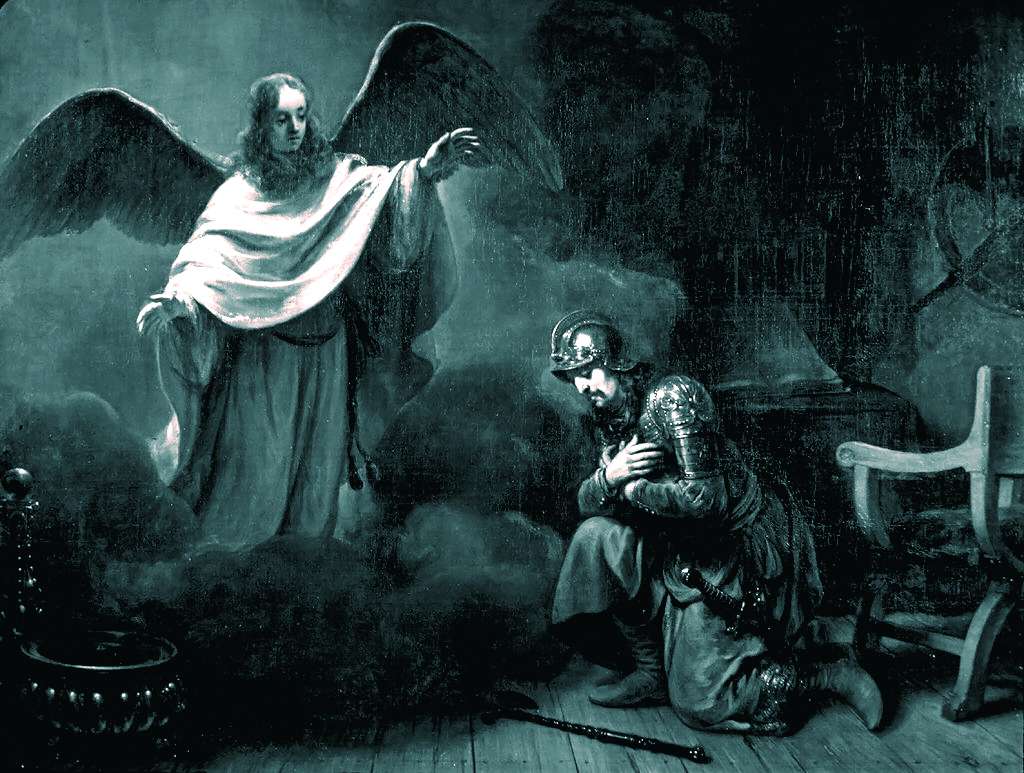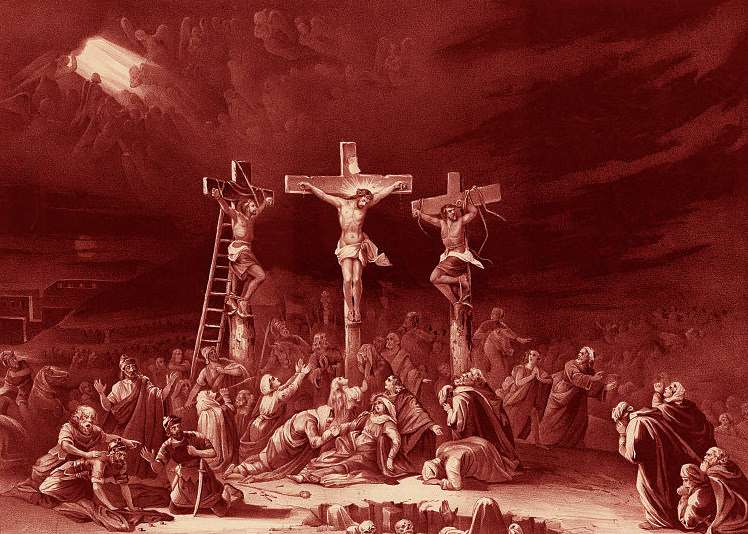

Jesus' Holy Life - A Model for His Disciples
Dr. C. T. Luiskutty
Behold what manner of love the Father has bestowed on us, that we should be called children of God! Therefore the world does not know us, because it did not know Him. Beloved, now we are children of God; and it has not yet been revealed what we shall be, but we know that when He is revealed, we shall be like Him, for we shall see Him as He is. And everyone who has this hope in Him purifies himself, just as He is pure. (1 John 3:1-3)
The disciples of Jesus are reminded that they are the children of God and exhorted to be pure as the Lord is pure. Purity implies freedom from contamination or adulteration. A person is pure when he is untainted with evil or guilt, is spotless and unblemished in character, and physically chaste. Holiness and sanctification are theological terms closely related to purity. Societies and churches have their standards of holiness. What one church considers unholy may not be deemed so by another church. But the Bible tells us that the standard of holiness for a believer who has become a child of God and who has the hope of seeing Jesus at His glorious appearance is Jesus.
The concept of holiness is fundamental to Christianity. It was taught and practised in the early church. But over a period of time the church evolved in to rituals and traditions. Dissatisfaction with this and a desire to return to more Biblical values resulted in various revivals at different times. Holiness became a major concept among the revivalists. It is in this context that we examine Jesus’ holiness as a model for His disciples.
1. JESUS’ STANDARD OF PURITY
According to Apostle Peter, the reason for holiness is that the Father is Holy and the standard of holiness is God’s holiness (1 Peter 1:15,16). Jesus said, “Be perfect as the Heavenly Father is perfect” (Matt 5:48). God’s imitable character was exhibited by Jesus while He lived on the earth. God’s plan for the church is that it may grow up in all things into Him who is the Head – Christ (Ephesians 4:15).
Apostle John asserts the fact that Jesus is pure and demands that His followers should be pure as He is. Purity means cleansing from defilement and has ceremonial significance to the Jews. The word used here and ‘holiness’ (hagios) have the same root and it strongly implies separation or being set aside exclusively for the use of God. Barclay communicates the depth of its meaning in the following statement:
The word hagios always has in it the idea of difference and separation. A thing which is hagios is different from ordinary things. A temple is holy because it is different from other buildings; a priest is holy because he is different from other men; a victim is holy because it is different from other animals; God is supremely holy because God is different from men; the Sabbath day is holy because it is different from other days. So, then, God chose the Christian that he should be different from other men.
Some people resort to legalism and physical isolation in order to achieve holiness. It is evident that they were not the methods Jesus used. Legalism means adherence to a set of rules-“do’s” and “don’ts”. This can be good for the society because a community which submits to the rule of law will have fewer problems than a community where anarchy prevails. But legalism leads to hypocrisy which was abhorred by Jesus. Isolating oneself from the world and living in a community of likeminded people may minimize the occasions for activities that will defile a person. But it is not this kind of purity that Jesus practiced, modelled, or advocated. His purity came from inside and that is what He demanded of His followers.
Holiness of Jesus is exemplified by the fact that “He had done no violence, nor was any deceit in His mouth” (Isaiah 53:9), “He knew no sin” (2 Corinthians 5:21), and “loved righteousness and hated lawlessness” (Hebrew 1:9). According to Peter, “(He) committed no sin, nor was deceit found in His mouth; who, when He was reviled, did not revile in return; when He suffered, He did not threaten, but committed Himself to Him who judges righteously”(1 Peter 2:22-23). His word, attitude, behaviour, interaction and actions were outward expressions of His inner purity. And this is what He expects in His followers.
Jesus lived among people of all backgrounds. His circle of friends often brought the ire of the religious zealots who wanted to earn the favour of God and respect of people through their good associations and good behaviour. Jesus’ mission was to help those who are in need; He carried out that mission while He was on the earth and then commissioned the disciples to continue it. Sinners are the people with the greatest need and they can be helped only when the saints are willing to go where they are and associate with them in their pathetic condition. This does not mean that we should participate in their sin to get them out of sin, but we should reach them while they are in need of salvation. Holiness is the ability to reach down to the pit to bring a person out of the mire of sin without being defiled by it. That is exactly what Jesus did, and He was holy. The Bible says, “For we do not have a High Priest who cannot sympathize with our weaknesses, but was in all points tempted as we are, yet without sin.” (Hebrews 4:15) Though Jesus did not sin (and could not because He was the perfect God and the perfect Man), He endured the extreme pressure that was placed on Him by the temptations (i.e., trials) that came His way
The writer of the book of Hebrews describes Jesus as the high priest “who is holy, harmless, undefiled, separate from sinners” (Hebrews 7:26). The last phrase should not be mistaken to mean that Jesus had no interaction with sinners; history attests to the contrary. As Paul says, there is no commonality between believers and unbelievers, no fellowship between righteousness and lawlessness, no communion between light and darkness, no accord between Christ and Belial (Satan), and no agreement between the temple of God and idols (2 Corinthians 6:14-16). Therefore “Come out from among them and be separate,” says the Lord. “Do not touch what is unclean, and I will receive you.” (2 Corinthians 6:14-18) Rather than physical isolation, what God is looking for among His saints is a separation of goals, motives, and lifestyle—inner workings of the heart. It is this kind of holiness that Jesus modelled as He did not subject Himself to any filthiness of the flesh and spirit, but perfected holiness in the fear of God. New Testament believers are called to follow the model of Jesus Christ (2 Corinthians 7:1).
2. THE DIFFERENCE BETWEEN A SAINT AND A SINNER
The controlling forces in the life of a non-regenerate man are described in Ephesians 2:1-3. They:
Are dead in trespasses and sins
Walk according to the course of this world
Are controlled by the prince of the power of the air
Have a spirit of disobedience
Conduct themselves in the lusts of their flesh
Fulfil the desires of the flesh and of the mind
Are, of course, the children of wrath
Paul elaborates the nature of such people in 1 Corinthians 6:9-10; Galatians 5:19-21; and Ephesians 5:3-5:
People in this condition cannot help themselves. “But God, who is rich in mercy, because of His great love with which He loved us, even when we were dead in trespasses, made us alive together with Christ (by grace you have been saved), and raised us up together, and made us sit together in the heavenly places in Christ Jesus, that in the ages to come He might show the exceeding riches of His grace in His kindness toward us in Christ Jesus.” (Ephesians 2:4-7) Anyone who yields to the love and mercy of God can receive the life in Christ. The transformation from the previous state to the new state is the sanctification brought about by the Holy Spirit. Paul reminds the believers what has transpired in their life: “And such were some of you. But you were washed, but you were sanctified, but you were justified in the name of the Lord Jesus and by the Spirit of our God.” (1 Corinthians 6:11) The sanctification and justification are in the name of Jesus and the agency that works in us to cause these is the Holy Spirit.
Paul addresses the believers in various places as saints (e.g., Romans 1:7; 1 Corinthians 1:2). They are the ones who have been sanctified by God. It is evident from 1 Corinthians that the people in the church did not achieve sainthood through sinless perfection; they still had various problems. But because of their faith and confession God saw them as set apart for the service, ministry and glory of God. Salvation is the beginning point of sanctification and the process continues with the help of the Holy Spirit as the believers allow the Word of God to cleanse them. The standard for their holiness is Jesus Christ. One who follows the example set by Jesus and grows in his conformity to Christ’s character is a disciple. A true church is made up of such disciples who are also called Christians (Acts 11:26).
3. THE DISCIPLES REFLECT THE MASTER
According to Charles Hodges, “Saints are those who are cleansed by the blood of Christ and by the renewing of the Holy Spirit and are thus separated from the world and consecrated to God.” As separated people, they are different in all aspects from the people of the world. Throughout the history of the church, this fact was realized. For example, the monks chose a simple lifestyle as manifested in their robes and asceticism. The Holiness Movement is the result of such a spiritual renewal and became very popular in 19th and 20th centuries.
A reaction to indulgence in merriment and luxuries in the church gave birth to the “Holiness Movement” spearheaded by John Wesley and other revivalists. They insisted that revival and real sanctification will usher in a lifestyle that is drastically different from that of the world. Rules were made against wearing immodest attire (especially of women), smoking, drinking, going to movie and dance halls, wearing jewelry, gambling, etc. However, as rules can control only the outward expression and not the inner condition, holiness eventually deteriorated to mere conformity in external appearance and behaviour without holding on to its spiritual essence. To avoid the appearance of hypocrisy some denominations made changes in their rules. Others attempt to hold on to their rules and find Biblical justification for them.
Sanctification means separation from the world “unto the Gospel of God” (Romans 1:1). Thus whatever is considered as a mark of holiness should remove us from the mould of the world and make us look more and more like Jesus. Apostle Paul exhorts, “And do not be conformed to this world, but be transformed by the renewing of your mind, that you may prove what is that good and acceptable and perfect will of God” (Romans 12:2). Neither conformity to the world nor conformity to the rules of some organization is real holiness. Conformity to the will of God constitutes holiness. While the world judges us by what it sees externally, God evaluates the internal state. The external may be a real reflection of the internal or just pretence. If modesty and other healthy habits are the result of a genuine desire to please God and to manifest His nature in the world, then there is holiness; if not, there is conformity to legalism.
When we earnestly desire to do the will of God and honour Him, we will avoid any behaviour that will draw attention to ourselves. Spurgeon’s advice was that Christians should not be the first in fashion or the last. The first in fashion draws attention from others, as does the last. It is improbable that Jesus wore some special kind of clothes as a mark of holiness; He wore the same kind others of His period wore. That is why His captors were willing to pay a substantial amount of money to the greedy Judas, just to point Him out in a crowd.
Jesus’ life does not show that he was an abject pauper. Neither did He isolate Himself from enjoying the company of others in a social setting. He went to the feast at Cana, was the guest at the house of a wealthy tax collector named Zacchaeus and a Pharisee named Simon. He allowed women to anoint Him with expensive ointment on different occasions. He had an expensive coat that the Roman soldiers coveted to possess. It is true that He was not a man with many possessions of the world. But the Scripture does not indicate that Jesus demanded that all His followers should be poor. He showed what their priorities should be, and clearly stated that if anyone places material possessions above his relation with God, he cannot be His disciple.
4. THE RESULT OF SANCTIFICATION
Sanctification means separation from the world and identification with Christ. Sanctification is essential in conforming to the nature of Jesus. He was not very popular when He came to the world. “He came to His own, and His own did not receive Him” (John 1:11). Things are not better now. Apostle John affirmed the fact that we were the children of God and then added, “Therefore the world does not know us, because it did not know Him.” Saints of God may see that their rights are violated, or due recognition is not given. Followers of Jesus cannot expect fair treatment from a world that did not treat the Master fairly. Whenever the world approves what we are doing or admires us for who we are, we need to closely examine our being and our doing.
Sanctification is a work of the Holy Spirit with our co-operation. This ongoing process transforms us completely. When we realize what the Holy Spirit is doing in our life and submit to Him, our desires, ambitions, goals, and priorities change from a selfish perspective to pleasing God. A saint is willing to pay the price so that God’s will for his life will be fulfilled, because he “is set aside for the sole use of God.” He belongs to God; the ownership has been transferred. It is no wonder that when such a transformation occurs, there will be external manifestations and the world will notice them. This is achieved by faith or absolute trust in God.
A saint has the hope of seeing the Lord. Holiness is a pre-requisite for seeing the Lord (Hebrews 12:14). The mortal body will be replaced with an immortal body, the corruptible will be changed to the incorruptible. This hope and assurance serve as the motive for keeping oneself pure as the Master is pure. Jesus said, “Blessed are the pure in heart, for they shall see God” (Matthew 5:8).















